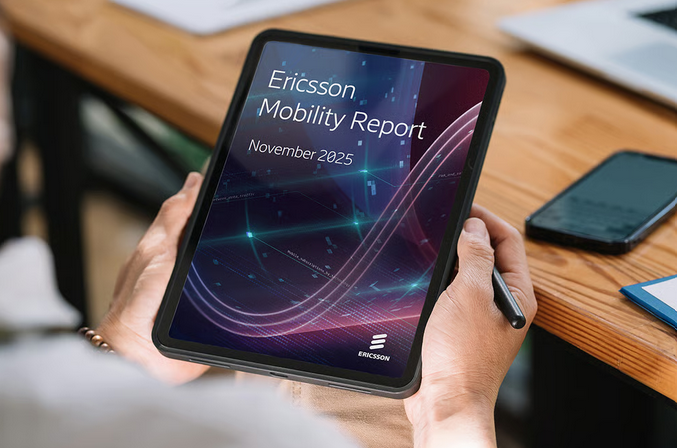Report: Differentiated connectivity services gaining momentum
November 20, 2025

5G Standalone (SA) deployments have triggered a notable 2025 growth in the number of communications service providers (CSPs) offering differentiated connectivity commercial models based on 5G SA Network Slicing – where CSPs guarantee quality of service for customer use cases through the allocation of slices of the network, according to the November 2025 Ericsson Mobility Report (EMR).
More than 90 CSPs have now launched/soft-launched 5G Standalone (5G SA) networks – an increase of about 30 CSPs from the same period last year and 20 from the June 2025 EMR report.
EMR researchers identified 118 cases – across 56 CSPs – where network slicing is used to provide differentiated connectivity services.
Of the 118 cases – 65 have moved beyond proof of concept and into commercial services, across 33 CSPs. These are either subscription services or add-on packages for consumer or enterprise customers. Twenty-one of the 65 commercial offerings – almost one third – were launched during 2025 alone.
“We see that service providers around the world are keen to embrace and deploy 5G SA to offer differentiated connectivity based on value services and not just data volume packages,” EMR publisher and Ericsson CTO, Erik Ekudden, said. “As reflected in the case studies in this EMR edition, 5G SA is already enabling differentiated connectivity opportunities. We’ve seen many service providers go from proof-of-concept to commercial deployment in 2025 alone, and we expect to see that trend continuing.”
The November 2025 EMR covers a new forecast timeframe, from 2025 through the end of 2031.
The new reporting EMR period also covers the first expected deployments of commercial 6G. Based on previous mobile generation cycles’ subscriptions uptake, EMR researchers expect the first commercial launches to be driven by leading service providers in front-runner markets – such as the US, Japan, South Korea, China, India and some Gulf Cooperation Council countries.
Global 6G subscriptions are forecast to reach 180 million by the end of 2031, not including the early uptake of AI-enabled Internet of Things devices. The subscription uptake number could increase significantly if 6G launches earlier than previous cycles indicate.
Commercial 6G is expected to launch about a year later in Europe, compared to other countries, than was the case for 5G, primarily due comparably later deployments of 5G SA
As an ongoing major 5G use case, enhanced mobile broadband is forecast to top 6.4 billion 5G subscriptions by the end of 2031, comprising about two-thirds of all mobile subscriptions at the time. Some 4.1 billion of these subscriptions – about 65 per cent – are forecast to be 5G SA.
In 2025 alone, 5G subscriptions are expected to top 2.9 billion by the end of the year – equating to about one third of all current mobile subscriptions – an increase of some 600 million subscriptions year-on-year.
In geographical coverage terms, 2025 saw an increase of 400 million people worldwide being able to access 5G. About 50 percent of the global population beyond mainland China is expected to have 5G coverage by the end of 2025.
Mobile network data traffic grew 20 per cent between the third quarter of 2024 and the corresponding period in 2025 – a slightly larger than expected increase, driven by mainland China and India. Continued growth is forecast at an annual average of 16 per cent through 2031.
5G networks are expected to manage 43 per cent of all mobile data by the close of 2025 – up from 34 per cent for the corresponding period last year. EMR experts forecast this to increase to 83 per cent in 2031.
Fixed Wireless Access (FWA) broadband continues to grow as a 5G use case. The November 2025 EMR forecasts that about 1.4 billion people globally are expected to access FWA broadband by the end of 2031 – 90 per cent via 5G.
EMR researchers have identified 159 providers that currently offer FWA services via 5G – amounting to approximately 65 per cent of all FWA service providers. The number of service providers offering speed-based tariffs – a common monetisation model for fixed broadband via fibre or cable – increased from 43 per cent to 54 per cent since the November 2024 EMR.
Other posts by :
